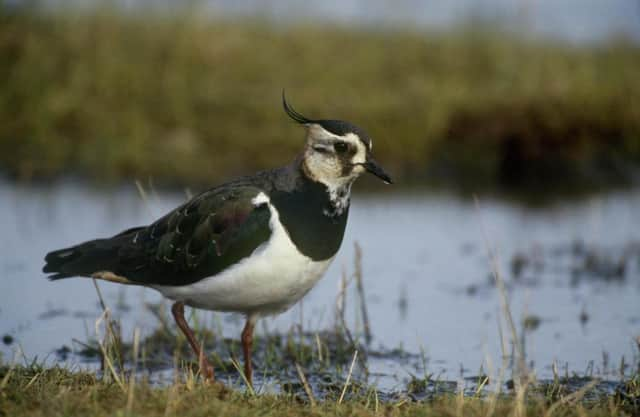Common Agricultural Policy destroying environment


FOR a lapwing, the RSPB’s nature reserve at Vane Farm beside Loch Leven, near Kinross, is a pretty friendly location. There are many places to nest, to feed and to raise youngsters, in the company of cattle, sheep and enthusiastic people enjoying the outdoors.
Outside the nature reserve, however, life is very different. To a lapwing, this is desert country; various shades of green, but hostile territory nevertheless. Welcome to the Common Agricultural Policy and its relentless destruction of our bird and insect life, wildflowers and most other things that our planet is good for, unless you make money from monoculture crops, artificial fertilisers, herbicides or insecticides.
Advertisement
Hide AdAdvertisement
Hide AdLater this year Richard Lochhead MSP, Cabinet secretary for rural affairs, will decide on the future implementation of the CAP in Scotland, subject to the agreement of the European Commission. Detailed plans will spell out how farmers are to be supported financially over a five year period, from January 2015, to produce much of our food as well as environmental and other public benefits.
Unfortunately, for lapwings, and most of the rest of us, things are looking pretty hopeless. Once again, the farming lobby seems to have bent the political ear, and most of our money in the next CAP programme is likely to go to farmers in the “agri-business” to produce more of what is already in plentiful supply.
Already, under existing CAP policy, nesting lapwings have disappeared from the farmland around Vane Farm nature reserve because of the relentless ploughing and planting and the application of fertilisers and pesticides.
The minister must substantially change the way CAP is implemented if the green desert and its continuing impoverishment of our wildlife is to be halted. For many years, attempts to curtail the damage have focussed on the promotion of “agri-environment” measures – additional financial incentives paid to farmers to persuade them to adopt wildlife-friendly practices.
These measures have achieved too little. When agri- environment meets agri-business, there is only one winner.
In recent years, Scottish Government officials have been walking the boundaries of every field that is subject to CAP subsidy, accurately marking boundaries and measuring field areas using satellite tracking equipment. So now we have the basis for a system which could ensure that all farmers who receive CAP funding also meet environmental needs in recognition of their roles as custodians of our land.
A new approach could require that, on every such field, the farmer would be obliged to allocate 10 per cent of the land surface to environmentally friendly farming. On this “environmental allocation”, there would be management restraints on such activities as ploughing, planting of crops, harvesting and the application of artificial fertilisers and pesticides. There could also be management requirements encouraging the planting of certain crops, including trees or vegetation of value to wildlife or public access. The different management regimes could be bundled up into a set of menus which would be designed to deliver a range of wildlife and other environmental benefits. The farmer would decide which menu to apply in each field.
For many farmers, the expansion of field margins by a few metres to provide wildlife habitat would be the most practical way of meeting the 10 per cent requirement.
Advertisement
Hide AdAdvertisement
Hide AdFor the government, sampling by aerial survey would be a straightforward way of ensuring compliance – from the air, such habitat strips are readily distinguishable from the rest of the crop. And the minister would be demonstrating that, at long last, the protection and enjoyment of the natural heritage of our agricultural landscape is no longer going to be a low priority. Lapwings – and the rest of us – will be pleased.
• Dave Morris is director of Ramblers Scotland www.ramblers.org.uk
SEE ALSO